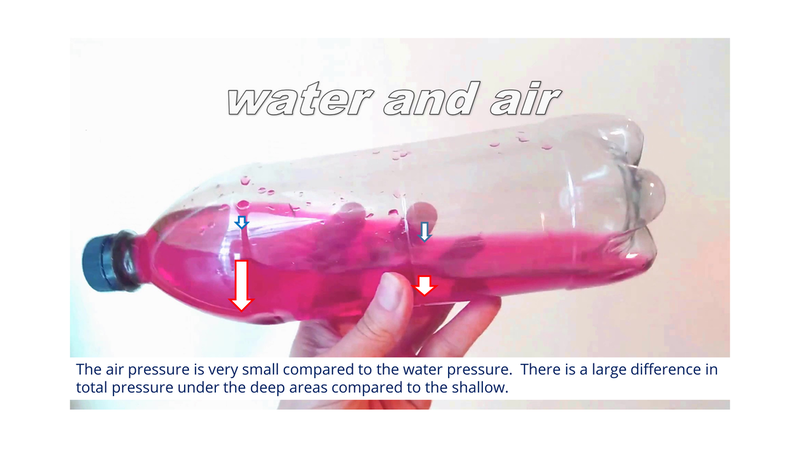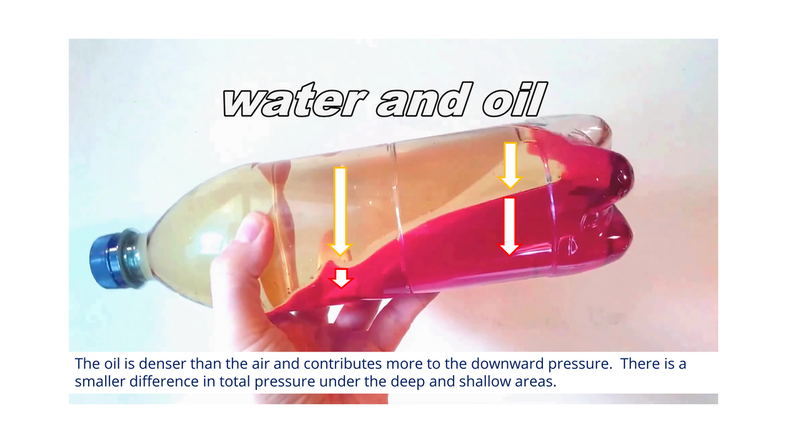Slow Waves |
|
Watch waves in slow motion with this simple kitchen science experiment!
|
Curiculum links: KS3&4 Physics: Waves
|
|
|
Download the experiment guide, including how to clean up afterwards:
| ||||||
You will need one or two clear bottles with secure lids, water, food colouring and vegetable oil.
What is going on? You should notice that with oil above the water, the waves move surprisingly slowly.
The driving force for the wave is related to the difference in pressure on the water beneath the deep and shallow areas (the crest and trough of the wave). Water under the deep areas is under greater pressure than water under the shallow parts, so it is pushed towards the shallow parts, driving the wave along.
When the space above the water is filled with air, which is much less dense than water, the pressure difference is large. This creates a strong driving force and the wave moves fast.
- Fill the bottle about 1/3 full with water, add a few drops of food colouring and seal tightly.
- Hold the bottle horizontally and tilt it back and forth. Watch the movement of the water. How long does it take a wave to travel the length of the bottle?
- Now carefully add oil on top of the water until the bottle is almost full. Allow the bottle to stand for a moment so the layers fully separate.
- Now repeat step 2. How long do the waves take this time?
What is going on? You should notice that with oil above the water, the waves move surprisingly slowly.
The driving force for the wave is related to the difference in pressure on the water beneath the deep and shallow areas (the crest and trough of the wave). Water under the deep areas is under greater pressure than water under the shallow parts, so it is pushed towards the shallow parts, driving the wave along.
When the space above the water is filled with air, which is much less dense than water, the pressure difference is large. This creates a strong driving force and the wave moves fast.
Vegetable oil is less dense than water, but much more dense than air. When the space above the water is filled with oil, the total pressure is greater, but the difference in pressure on the water underneath the crest and trough is much less than when it is filled with air. The driving force is smaller and the wave moves strangely slowly.
This article from Scientific American has more information about this experiment and ways to explore further.

